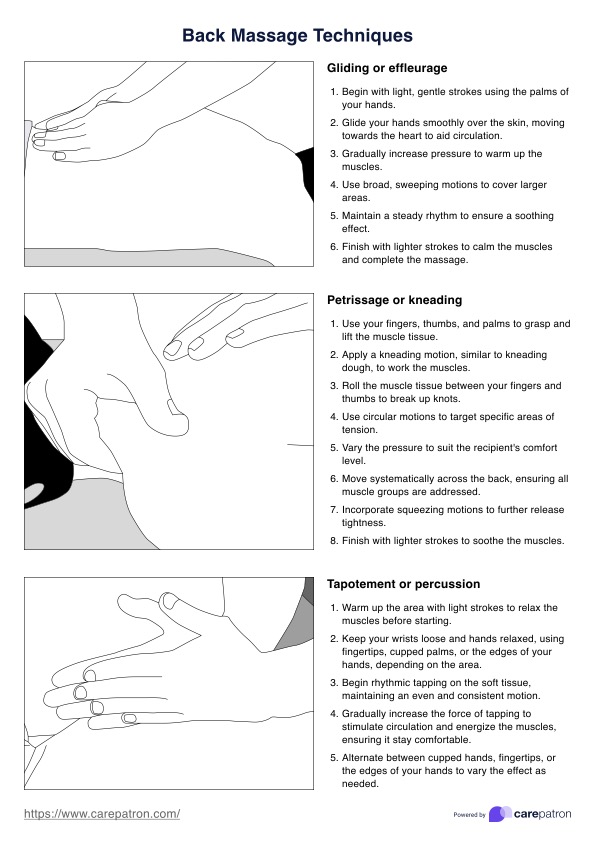Back massages can help alleviate muscle tension, pain, stiffness, stress, and poor circulation. They may also reduce headaches, improve posture, and promote relaxation.

Back Massage Techniques PDF
Learn various techniques with our Back Massage Techniques PDF. Download our free PDF example to get started today!
Use Template
Back Massage Techniques PDF Template
Commonly asked questions
Yes, avoid back massages if you have open wounds, skin infections, fractures, blood clots, or certain medical conditions like osteoporosis or advanced heart issues. Always consult a doctor if unsure.
The frequency depends on your needs. Typically, it is weekly for chronic issues or once a month for general relaxation and maintenance. Consult with a professional massage therapist to get a specific timeline based on your needs.
EHR and practice management software
Get started for free
*No credit card required
Free
$0/usd
Unlimited clients
Telehealth
1GB of storage
Client portal text
Automated billing and online payments











